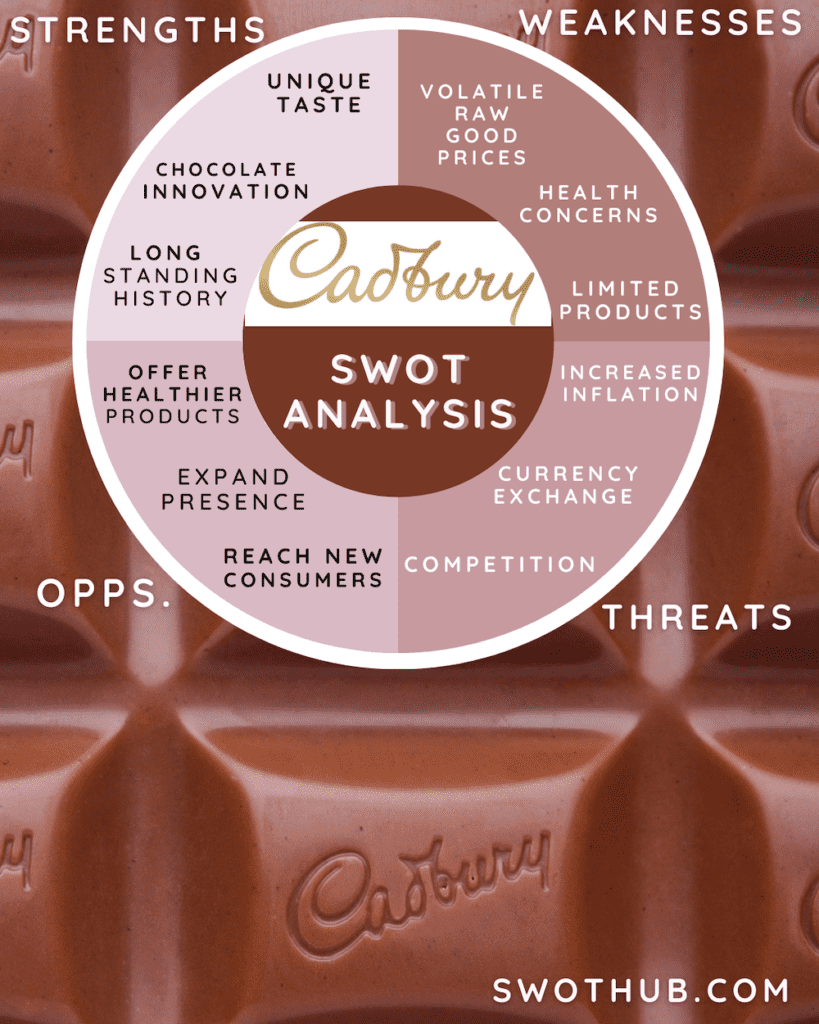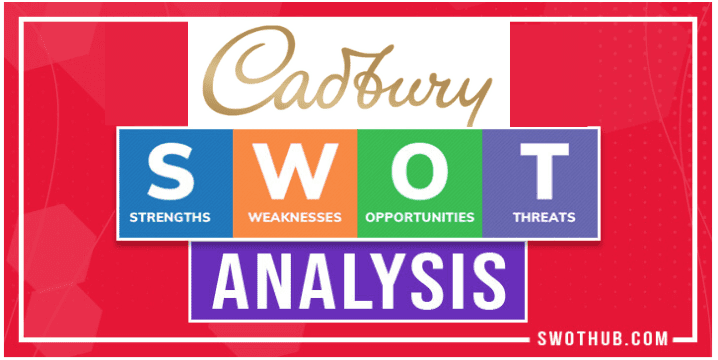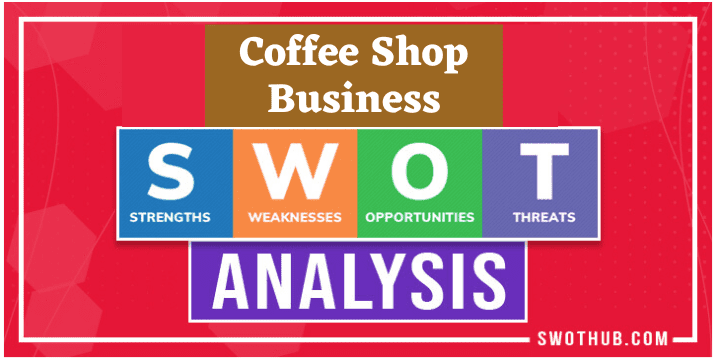The world of candy, confectionary treats, and sweets is big business. Every year, some countries such as the US eat more than 8 pounds of candy per person/per year! At the top of the chocolate manufacturers are Nestle and of course Cadbury. We will take a look at how a Cadbury SWOT analysis will highlight how this British candy company has stayed at the top of the chocolate candy industry for generations and will highlight Cadbury competitors to see how they fare in the competitive business.
Table of Contents
Cadbury History and Mondelez: Parent Company of Cadbury
Cadbury is a British confectionery company that was founded by John Cadbury in 1824 in Birmingham, England. Initially, the company was a small grocery store that sold coffee, tea, and drinking chocolate, which was a popular beverage during the time. In 1831, John Cadbury stopped selling other products and focused solely on producing drinking chocolate, which he made by hand using a pestle and mortar.
In 1847, John’s son Richard took over the business and developed a new way of producing chocolate that made it easier to mix cocoa butter and other ingredients, resulting in a smoother and creamier texture. This led to the creation of the first-ever Cadbury chocolate bar in 1849, which was sold in the form of a cocoa essence.
Throughout the 19th century, Cadbury continued to innovate and expand its range of products, including the production of milk chocolate in 1905, which became incredibly popular. In 1913, Cadbury introduced its famous Dairy Milk chocolate bar, which has become a staple of British confectionery ever since.
Today, Cadbury is one of the largest chocolate producers in the world, with its products sold in over 50 countries. Despite being acquired by the multinational conglomerate parent company Mondelez International, in 2010, the Cadbury brand remains a beloved and iconic part of British culture and confectionery history. In this Cadbury SWOT analysis, we will highlight how its history has made them into the candy giant they are today.
Cadbury Competitors and their Strengths and Weaknesses
Cadbury competitors in the chocolate and confectionery industry include Nestle, Mars, Hershey’s, Ferrero, and Lindt. Cadbury’s strength lies in its long-standing history and reputation as a high-quality British brand, with a strong focus on innovation and the development of new products. Cadbury’s Dairy Milk chocolate has a unique taste that sets it apart from its competitors. However, Cadbury’s weakness lies in its relatively limited product range compared to some of its competitors, who offer a wider variety of confectionery products.
Is Cadbury owned by Hershey?
The rights to produce and sell CADBURY goods in the US were granted to The Hershey Company in 1988. The Hershey plant in Hershey, Pennsylvania, produces Cadbury mini eggs, Cadbury Egg, Cadbury Dairy Milk chocolates, Cadbury Bourneville drinking chocolate, as well as Flake, Wispa, Twirl, and Eclairs chocolates.
SWOT Analysis of Cadbury – At a Glance
| Company | Cadbury, Mondelez International – Parent Company |
| Founders | John Cadbury |
| Industry | Candy |
| Year founded | 1824 |
| CEO | Dirk Van de Put |
| Headquarters | Uxbridge Business Park, Greater London, England |
| Employees (2022) | 79,000 (Dec. 2021) – Mondelez |
| Annual Revenue (FY 2021) | US $28.72 billion (2021) |
| Profit | Net income (FY 2021) | US $4.30 billion (2021) |
Cadbury SWOT Analysis
A SWOT analysis for Cadbury is a framework used to assess a company’s competitive situation and to create strategic planning. By taking Cadbury strengths, and Cadbury weaknesses of Cadbury threats of Cadbury as well as opportunities of Cadbury into account, we may better gain in-depth knowledge.
Let’s take a look at Cadbury SWOT framework to better understand its competitive position and potential for future growth. Read on to learn more about their Strengths, Weaknesses, Opportunities, and Threats.
Who are Cadbury’s competitors?
Mars, Incorporated: Mars is a multinational confectionery company that produces popular brands such as Mars, Snickers, Twix, and M&M’s. It competes directly with Cadbury in the chocolate segment.Hershey: Many people ask if Cadbury is owned by Hershey?The rights to produce and sell Cadbury products in the US were granted to The Hershey Company in 1988.Although many Hershey products compete with Cadbury including Hershey’s, Reese’s, Kisses, and Twizzlers, among others. While Cadbury has a strong presence in Europe and other regions, Hershey is a major competitor in the United States.
Nestlé: Nestlé is a Swiss multinational food and beverage company that offers a wide range of products, including chocolate and confectionery. Some of its popular chocolate brands include KitKat, Crunch, Aero, and Smarties.
Cadbury SWOT Analysis Strengths
Overall, Cadbury’s strengths in brand reputation, innovation, and product differentiation position it well in the competitive confectionery industry.
Long-standing history: In this Cadbury SWOT analysis some of its key strengths include its long-standing history and reputation as a high-quality British brand. Cadbury has been producing chocolate for almost 200 years, and this legacy has helped to establish a strong brand identity and loyal customer base.
Unique taste: Many people ask ‘Why does Cadbury taste different in America?” The fat content and amount of cocoa used are the only variations between the US and UK versions. While the fat in US Cadbury bars is made of cocoa butter to comply with FDA regulations, vegetable oils like palm and shea butter are permitted in the UK.
Cadbury manufacturing process: In 1879, Rudolphe Lindt created a method known as “conching” that essentially involves heating milk and cocoa butter to a high temperature and mixing the two together for a few days. While removing the volatile flavors, conching also helps smooth out the chocolate. This is why Cadbury is so creamy!
Focus on innovation: Cadbury is known for its focus on innovation and the development of new products. For example, the introduction of Dairy Milk chocolate in 1905 was a significant innovation that set the company apart from its competitors. This ongoing commitment to innovation has helped Cadbury to stay relevant and competitive in a crowded market.
Cadbury SWOT Analysis Weaknesses
A limited number of products: Product diversification: While Cadbury provides a diverse selection of chocolate goods, their portfolio may be less diverse than some competitors. For example, companies such as Nestlé and Mondelez offer a broader range of confectionery products other than chocolate, such as candies, gum, and other snacks. Cadbury may be more vulnerable to competition in various product categories as a result of this.Geographic presence: Cadbury has a considerable presence in the United Kingdom and other locations, but its global reach may be less than that of other competitors. This could limit its market share in areas where competitors have a larger distribution network.
Brand perception and differentiation: Cadbury has a long history of making high-quality chocolates, but it may find difficulties distinguishing its brand in a competitive market. To differentiate themselves, competitors frequently use inventive marketing methods, unique packaging, and product variations. Cadbury must consistently invest in brand uniqueness in order to keep its competitive advantage.
Trends in health and wellness: As consumers place a greater emphasis on health and wellness, there is a greater demand for healthier snacks and lower-sugar options. Cadbury, like other conventional confectionery manufacturers, may experience difficulties responding to changing consumer tastes. Competitors who thrive at providing healthier alternatives or marketing themselves as healthier alternatives could gain a competitive advantage.

Cadbury SWOT Analysis Opportunities:
Brand reputation and heritage: Cadbury has a long history and a strong brand reputation that has been created over many years. This legacy presents an opportunity to capitalize on the company’s history and good associations with quality and taste. Cadbury may continue to emphasize its legacy and distinctive chocolate-making practices to instill nostalgia and trust in customers.Expand product range in a healthier direction:To stay ahead of the competition, Cadbury can concentrate on product innovation and new product development. Cadbury can cater to evolving consumer preferences and attract the attention of chocolate connoisseurs by providing new flavors, textures, and varieties. Cadbury can also investigate healthier alternatives or develop goods that meet special dietary requirements, such as vegan or gluten-free chocolates.
Offer low sugar and fiber-rich products: In addition to plant-based products in a SWOT analysis for Cadbury they have an opportunity to include foods that contain less sugar as well as snacks that have protein or fiber for added health benefits.
Collaborations and Partnerships: In a Cadbury SWOT analysis, collaborating with other companies, particularly those outside of the chocolate business, can assist Cadbury in reaching new consumers and developing innovative product offers. Collaborations can include limited-edition co-branded items, cross-promotions, or collaborative ventures that use both firms’ capabilities and client bases.
Cadbury SWOT Analysis Threats:
Fierce competition: Cadbury also faces threats from its competitors, who are constantly introducing new and innovative products to the market. For example, Nestle has recently launched plant-based alternatives to its popular KitKat chocolate bars, which could potentially cut into Cadbury’s market share if it fail to respond to this trend.Consumer Preferences and Trends: Consumer preferences and trends can change over time, posing a challenge to established companies such as Cadbury. As people become more health-conscious, there may be greater demand for better, lower-sugar options. Cadbury must adapt and develop to meet evolving consumer expectations, offering a varied selection of products that fit a variety of dietary choices and needs.
The rising cost of raw materials: Additionally, the rising cost of raw materials and fluctuating currency exchange rates could pose challenges to Cadbury’s profitability and supply chain operations.Counterfeit Products and Brand Protection: Since Cadbury’s brand and products are so popular, they are vulnerable to counterfeiters and unlicensed imitations. Counterfeit products can harm a brand’s reputation, erode customer trust, and result in financial losses. To tackle this threat, Cadbury must invest in strong trademark protection measures such as anti-counterfeiting technologies and legal enforcement.
Cadbury SWOT Analysis Recommendations and Conclusion:
Mondelez International, the parent company of Cadbury, positions the brand to compete against its competitors for future growth by focusing on innovation and product development. Mondelez recognizes that the confectionery industry is highly competitive and that consumers are constantly seeking new and exciting products. Here are some other recommendations for Cadbury:
- Product innovation: Cadbury should always innovate to meet changing consumer tastes. Healthy options, reduced-sugar alternatives, and special editions can excite and intrigue consumers.
- Diversification of Product Range: Cadbury is best known for its chocolate, but expanding into sweets, gums, and snacks can help diversify the product range. Cadbury can reach more customers by diversifying.
- Digital Transformation: Use e-commerce and digital technology to improve the customer experience and accessibility. Cadbury can market, engage, and streamline purchases online. Interactive websites, personalized marketing efforts, and smooth online shopping can boost brand loyalty.
- Sustainability: Cadbury should prioritize responsible cocoa procurement, environmental protection, and carbon reduction. Sustainability can appeal to eco-conscious consumers and boost a brand’s reputation.
- Customer Engagement and Brand Building: Cadbury should use branding, narrative, and engaging marketing to connect with customers emotionally. Social media engagement, giveaways, and influencer relationships can build brand loyalty and community.
- Collaborations and Partnerships: Working with popular brands or influencers can help Cadbury reach new audiences and produce distinctive products. Joint marketing initiatives, co-branded limited editions, and cross-promotions thrill consumers.
- International expansion: explore new markets, especially emerging economies with rising consumer markets. Partnerships, acquisitions, or strategic alliances with local companies can utilize existing distribution networks and market experience to expand
Cadbury may improve its competitive position, acquire new customers, and remain a global candy leader by following these suggestions.
FAQs for SWOT Analysis of Cadbury
1. What is the competitive advantage of Cadbury?
Cadbury’s competitive advantage lies in its strong brand reputation, extensive distribution network, diverse product range, and consistent innovation. These factors contribute to its leading position in the confectionery market.
2. What major problem did Cadbury encounter?
Cadbury faced a significant problem in 2006 with a salmonella contamination issue in its products. This led to a massive product recall, negatively impacting its brand reputation and financial performance.
3. What is the SWOT analysis of Cadbury?
Strengths: Strong brand, diverse product portfolio, extensive distribution network.
Weaknesses: Dependence on confectionery market, vulnerability to raw material price fluctuations.
Opportunities: Expanding into emerging markets, product innovation.
Threats: Increasing health consciousness, intense competition.
Cadbury needs to remain agile and responsive to changes in the market and continue to invest in product innovation and development. In this Cadbury SWOT analysis, we’d love to know what you think and if you believe Cadbury competitors can outrank them in the candy world!





